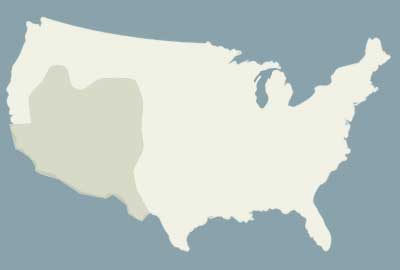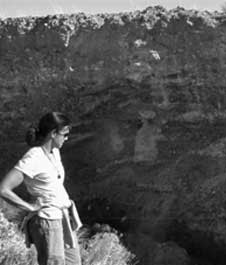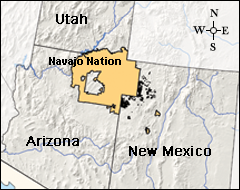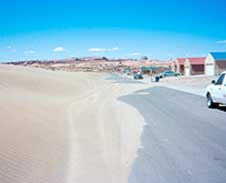Tribal Profiles
- Tribal Profiles
- Southwest Region
- Bidii Baby Foods
- Bishop Paiute Tribe
- Diné Native Plants Program
- Fort McDowell Yavapai Nation
- Hopi Earth Day
- ITEP’s SW Tribal Climate Change Project
- ITEP’s Academic Year Internship Program
- Jemez Pueblo Renewable Energy
- La Jolla Band of Luiseño Indians
- Mescalero Apache Tribe
- Native Seeds/Search
- Navajo Nation Dune Study
- North Leupp Family Farms
- Pueblo of Tesuque
- Pueblo de San Ildefonso Climate Action Plan
- Santa Ynez Band of Chumash Indians
- Tohono O’odham
- Ute Mountain Ute
- Wind River
- Tribal Profiles
- Southwest Region
- Bidii Baby Foods
- Bishop Paiute Tribe
- Diné Native Plants Program
- Fort McDowell Yavapai Nation
- Hopi Earth Day
- ITEP’s SW Tribal Climate Change Project
- ITEP’s Academic Year Internship Program
- Jemez Pueblo Renewable Energy
- La Jolla Band of Luiseño Indians
- Mescalero Apache Tribe
- Native Seeds/Search
- Navajo Nation Dune Study
- North Leupp Family Farms
- Pueblo of Tesuque
- Pueblo de San Ildefonso Climate Action Plan
- Santa Ynez Band of Chumash Indians
- Tohono O’odham
- Ute Mountain Ute
- Wind River

Navajo Nation Dune Study
Dune Study Offers Clues to Climate Change
Click HERE for PDF version.
 Dr. Margaret Hiza’s ongoing studies of sand dunes on the Navajo Nation provide dramatic evidence of how global climate change can impact the land and its inhabitants. Her work sheds light not only on soil-precipitation interactions but on how those dynamics can impact cultural ways.
Dr. Margaret Hiza’s ongoing studies of sand dunes on the Navajo Nation provide dramatic evidence of how global climate change can impact the land and its inhabitants. Her work sheds light not only on soil-precipitation interactions but on how those dynamics can impact cultural ways.
Hiza, Project Chief of the Navajo Land Use Planning Project with the U.S. Geological Survey, has been studying dunes for several years, expanding on the work of Drs. Dan Muhs and Nick Lancaster. Hiza credits their classic studies on dunes for much of her own progress in this unique line of scientific inquiry.
Hiza began her research with a satellite survey of all the dunes on the sprawling Navajo Nation, mapping their sizes and locations. Over the years she has also monitored their moisture content, plant and animal bases, nutrient capacity, and movement over time.
 The Southwest’s drought has been an on-and-off affair for two decades, but since around 1996 it has been more or less constant, and the past five years have seen several of the hottest average temperatures on record. Hiza’s dune studies are helping to unlock the mysterious interrelationship between land forms, climate change, and the living systems associated with these ever-shifting natural structures.
The Southwest’s drought has been an on-and-off affair for two decades, but since around 1996 it has been more or less constant, and the past five years have seen several of the hottest average temperatures on record. Hiza’s dune studies are helping to unlock the mysterious interrelationship between land forms, climate change, and the living systems associated with these ever-shifting natural structures.
Dunes tell the story of drought and climate change in dramatically visual ways. In times of adequate moisture, Hiza says, they don’t much resemble the sere, barren heaps of sand as portrayed in motion pictures; rather, they’re draped in vegetation and closely resemble the surrounding landscape. It is only when their moisture content plunges that dunes begin to resemble their Hollywood stereotypes. When temperatures rise and evaporation increases, soil adherence decreases. Soon, dune plant communities decline, sometimes to be replaced by invaders such as Russian thistle (“tumbleweed”), a plant that grows and then detaches from the earth, leaving no root system behind to stabilize the soil. Stripped of their former plant communities, dunes begin to shift, physically moving across the land as the sand particles are blown about. Once dunes begin to move, the dust and fine organic material that accumulates with soil development blows away during the windy spring. The lack of fine particles that contain plant nutrients and sand dune movement disrupt the local ecosystem, because most plants cannot survive in moving sand. The dunes’ ability to restabilize and again provide foundations for the living communities has been altered, and is now difficult to reverse.
Climate can vary markedly from one region to the next, and even between areas within a region-one reason climate change can be so difficult for a non-scientist to comprehend. Long-term trends tell the real story, and the trend for the Southwest is toward a lengthy future of hotter, drier weather. Even a shift of a degree or two can have stark effects on the land and life it supports. For example, Hiza says, in a region that receives an average of six inches of precipitation per year, an average temperature rise of less than two degrees F per year can decrease- annual precipitation by a third-a huge decrease in an already arid environment. Add increased evaporation to that number and you’re looking at a fundamentally altered ecosystem.
 Hiza’s work has already revealed several disturbing facts of life on the Navajo Nation:
Hiza’s work has already revealed several disturbing facts of life on the Navajo Nation:
- Temperature and evapotranspiration rates are increasing. Most climatologists believe that trend will continue.
- Dune mobility, a reliable measure of climatic change, is increasing, as is blowing dust.
- As dunes grow and move, associated vegetation is destabilized, old plant communities decline or disappear, and opportunistic plants move in.
- Because of the drought, many wells on the Nation are drying up. As a result, the Navajo people will have to invest more heavily in groundwater sources to meet human, livestock and agricultural needs, and they’ll have to make other changes to their old ways.
The culture of the people, who have long relied on a stable ecosystem, is changing with the climate. For example, extended drought has meant a lower carrying capacity for the sheep that graze Navajo land, and sheepherding has declined. That in turn has decreased the amount of wool available for -Navajo weavers, and fewer rugs are being -produced, -impacting the family incomes of weavers.
Navajo sheep ranchers must remove sheep more frequently than in earlier years to allow the drier ecosystem to rest and restore itself. More and more, the Nation is trucking sheep to tribally owned greener pastures south of the reservation. Some ranchers have shifted to cattle raising, which generally requires hay feeding. Hay often contains the seeds of non-native plants, and when it blows about, those seeds spread and take root, resulting in further ecological disruption.
For the Navajo people, global warming means change. The same applies to indigenous people across the globe. All of Earth’s residents are feeling the effects of climate change, but for Native people who live close to the land and rely directly on its bounty for their sustenance and cultural vitality, the impacts of global warming are as obvious as the swell of a dune on a desert landscape.
References and Resources
- USGS Navajo Land Use Planning Project:
http://geomaps.wr.usgs.gov/navajo/ - Sand Dunes – How climate change is altering the landscape in the desert Southwest (Institute for Tribal Environmental Professionals):
https://itep.nau.edu/eeop/sand-dunes/ - Audio: Sand Dunes on the Loose Due to Climate Change (USGS)–Podcast interview with USGS scientist Margaret Hiza and intern Leanna Begay on their research to understand the dunes’ plant diversity and what changes are occurring on the Navajo Nation. May 2009.
http://www.usgs.gov/corecast/details.asp?ep=94 - Navajo Memory Complements Science in Study of Climate Change. USGS Press Release, 10/21/11.
http://www.usgs.gov/newsroom/article.asp?ID=3007
This profile was developed in 2008 by the Institute for Tribal Environmental Professionals, Northern Arizona University, with financial support from the U.S. Environmental Protection Agency. The profile is available on the Tribal Wellbeing for Seven Generations Program website: https://itep.nau.edu/twsgp/tribes/. The tribal profiles featured on the website are intended to be a pathway to increasing knowledge among tribal and non-tribal organizations interested in learning about climate change mitigation and adaptation efforts.
CONNECT WITH US
Nikki Cooley
Co-Director
Nikki.Cooley@nau.edu
Karen Cozzetto
Manager
Karen.Cozzetto@nau.edu
Your tax deductible donation supports ITEP’s programming efforts.
Please contact us if you would like to contribute to our endowment or for any additional information regarding donations.

